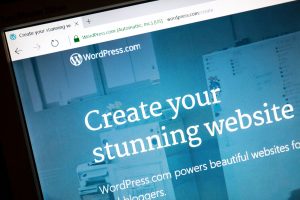Social media offers businesses an unparalleled opportunity to reach a global audience, build brand awareness, and foster customer loyalty. Likewise, for individuals, it’s a powerful tool for personal branding, networking, and sharing ideas.
While having a strong presence on social media is essential, the timing of your posts plays a vital role in maximizing engagement. When you share content at the optimal time, you increase the likelihood of reaching a larger audience, generating more likes, shares, comments, and clicks.
Posting strategically enhances your visibility on users’ feeds, ensuring your content doesn’t get lost in the sea of updates.
The key to achieving higher engagement lies in understanding when your target audience is most active. Every social media platform has its own unique user behavior patterns, making it crucial to tailor your social media posting schedule accordingly.
When you hit the sweet spot and deliver content during peak activity hours, you can effectively capture your audience’s attention and increase the chances of interaction.
Understanding Your Audience
Your audience is the driving force behind your engagement, brand loyalty, and, ultimately, your success. By knowing your audience inside out, you can tailor your content to resonate with them, which leads to higher engagement rates, increased followers, and more meaningful interactions.
Start by defining your target audience. Who are they? What are their interests, demographics, and pain points? Understanding their preferences, behaviors, and motivations will allow you to create content that genuinely appeals to them.
Remember, social media is about forming connections, and the better you understand your audience, the more authentic and relatable your content will be.
Audience Research and Analysis
Once you’ve outlined your target audience, it’s time to delve deeper through audience research and analysis. There are various tools and techniques available to gain insights into your audience’s preferences. Social media analytics platforms, for example, can provide valuable data on demographics, engagement metrics, and even the type of content that resonates most with your followers.
Additionally, consider conducting surveys or engaging in direct conversations with your audience to gather qualitative data. Ask for feedback on your existing content, understand their pain points, and discover what they wish to see more of. These interactions not only foster a sense of community but also provide invaluable information for refining your social media strategy.
Identifying Peak Active Hours of Your Audience
Knowing when your audience is most active on social media is like having the key to unlocking optimal engagement. Different platforms attract users at different times of the day and week, which can vary depending on your audience’s location and lifestyle.
Study your social media analytics data to pinpoint the peak active hours for your specific audience. Are they more active in the mornings, during lunch breaks, or late in the evening? Tailor your posting schedule to align with these high-activity periods to increase the visibility of your content and maximize engagement opportunities.
Remember, the social media landscape is dynamic, and user behavior can change over time. Regularly monitor your analytics to stay updated on any shifts in activity patterns. By staying in tune with your audience’s preferences and behaviors, you can continuously adapt your posting strategy to meet their needs and maintain strong connections with your community.
Platform-Specific Best Posting Times
Each social media platform has its own distinct characteristics and user behaviors. Understanding these differences is essential for tailoring your content and finding the best posting times for maximum impact. Let’s take a closer look at some popular platforms:
- Facebook: As a versatile platform, Facebook caters to a wide audience, and its peak usage times can vary. However, research suggests that posting during lunchtime (around 12 PM to 1 PM) and early evening (between 5 PM to 6 PM) tends to garner better engagement. Weekdays often perform better than weekends, but it’s essential to monitor your specific audience’s habits.
- Twitter: Twitter is fast-paced and demands frequent updates. Peak times for engagement on Twitter are often during weekdays, with the highest activity observed around 12 PM to 3 PM. Tweets during evening hours, around 5 PM to 6 PM, can also be effective.
- Instagram: This visual platform is popular among millennials and Gen Z, and the best times to post often align with users’ leisure hours. Aim for early mornings (7 AM to 9 AM) and evenings (5 PM to 7 PM), with a slight peak around lunchtime (11 AM to 1 PM). Sundays tend to perform exceptionally well for engagement.
- LinkedIn: LinkedIn is a professional networking platform with a primarily business-oriented audience. Posting during workdays, particularly on Tuesday, Wednesday, or Thursday, around 8 AM to 10 AM and 12 PM to 1 PM, tends to generate higher engagement.
While the mentioned time frames can be good starting points, it’s crucial to remember that no one-size-fits-all solution exists. Your audience and industry may have unique preferences that deviate from the general trends. Always rely on your social media analytics to gather data specifically tailored to your audience’s habits.
Once you’ve collected enough data, create a content calendar that aligns with your audience’s peak activity times. Consistency is key, so aim to maintain a regular posting schedule to keep your audience engaged and accustomed to your updates.
The Role of Time Zones in Social Media Posting
Time zones are a critical consideration, especially if your target audience spans different regions or countries. When your audience is dispersed across various time zones, scheduling posts can become challenging. Social media management tools can be incredibly helpful in overcoming this hurdle, as they allow you to schedule posts at specific times in different time zones.
Additionally, consider segmenting your audience based on their locations and adapting your posting schedule to reach them during their local peak hours. This approach ensures that your content reaches users at times when they are most likely to be active and receptive.

Industry-Specific Considerations
Understanding industry-specific behavior on social media is paramount to tailoring your posting strategy effectively. Different industries attract distinct target audiences with unique preferences and interests. By recognizing these variations, you can craft content that resonates with your niche audience, leading to improved engagement and better overall performance.
For instance, industries related to fashion, beauty, and lifestyle often thrive on visually-driven platforms like Instagram, where high-quality images and aesthetic appeal are crucial. On the other hand, B2B companies may find LinkedIn more effective for professional networking and thought leadership content.
As industries differ in audience demographics and behavior, their best posting times may also vary significantly. It’s essential to analyze your industry’s trends and your target audience’s habits to identify the most opportune moments for engagement.
Monitoring and Analytics
In the dynamic world of social media, tracking and analyzing your performance is fundamental to building a successful online presence. Without understanding how your content resonates with your audience, you risk missing out on valuable opportunities to enhance engagement, reach, and overall impact.
By closely monitoring your social media metrics, you gain valuable insights into what works and what doesn’t. You can identify trends, patterns, and areas for improvement, allowing you to make data-driven decisions that boost your social media strategy’s effectiveness.
Utilizing Social Media Analytics Tools
Thankfully, a wide array of social media analytics tools is available to help you gather and interpret valuable data. Major platforms like Facebook, Twitter, and Instagram offer built-in analytics dashboards that provide crucial information about post performance, audience demographics, reach, and engagement.
In addition to native analytics, third-party tools offer more comprehensive insights, including cross-platform data aggregation and advanced analysis features. These tools can streamline the process of monitoring multiple accounts and save time, enabling you to focus on refining your strategy.
How to Adjust Posting Times Based on Data Insights
Once you’ve accumulated sufficient data through social media analytics, it’s time to use those insights to optimize your posting times. Here’s a step-by-step guide:
- Identify High-Engagement Periods: Analyze your social media metrics to identify the periods when your audience is most active and engaged. Look for trends in day-of-week and time-of-day engagement.
- Experiment with Posting Times: Based on your findings, experiment with posting at different times during high-engagement periods. Test different time slots and days of the week to see which ones yield the best results.
- Track Performance: Continue monitoring your posts’ performance during these experiments. Compare the engagement metrics for each post to identify which posting times perform exceptionally well.
- Refine Your Posting Schedule: Gradually refine your posting schedule based on the data. Focus on the time slots that consistently generate higher engagement. Be flexible and willing to adjust your strategy if you notice shifts in audience behavior.
- Consider Time Zones: If your target audience spans different time zones, use scheduling tools to ensure your posts reach them at optimal times in their respective regions. Tailor your posting schedule to accommodate global followers.
- Analyze and Iterate: Social media behavior evolves over time, so it’s essential to continuously analyze your data and adapt your strategy accordingly. Stay up-to-date with the latest trends and adjust your posting times as needed.
By leveraging social media analytics and using data to inform your posting strategy, you can optimize your content distribution for peak performance. Embrace a data-driven approach, and let your audience’s preferences guide you toward fostering stronger connections and better engagement on social media.
Testing and Experimentation
A/B testing, or split testing, is a powerful method for optimizing your social media posting times. It involves comparing two or more variations of a specific element—in this case, posting times—to determine which performs better.
A/B testing provides data-driven insights that can help you fine-tune your posting strategy for optimal engagement and reach.
The value of A/B testing lies in its ability to remove guesswork from your social media approach. Rather than relying solely on assumptions or trends, you can make informed decisions based on concrete evidence gathered from real user interactions.
By systematically testing different posting times, you can identify the most effective schedule tailored to your audience’s preferences and behaviors.
How to Set Up and Execute Effective Experiments
- Define Your Goals: Before conducting A/B tests, clearly outline your objectives. What specific metrics do you want to improve? Having well-defined goals will guide your testing process, whether it’s likes, shares, clicks, or overall reach.
- Select One Variable: To conduct an effective A/B test, focus on testing one variable at a time. In this case, it’s posting times. This ensures that any changes in your results can be attributed directly to the tested variable.
- Create Test Groups: Divide your audience into test groups, each exposed to different posting times. Randomly assign your content to these groups to eliminate any bias in the experiment.
- Monitor and Measure: Over a defined period, closely monitor the performance of your posts in each test group. Track engagement metrics, such as likes, comments, shares, and click-through rates.
- Analyze Results: After gathering sufficient data, compare the performance of each posting time to identify trends and patterns. Look for statistically significant differences in engagement metrics.
Interpreting Results and Refining Your Posting Schedule Accordingly
Interpreting the results of your A/B tests is key to refining your posting schedule for better performance. Here’s how to proceed:
- Identify the Optimal Posting Time: Based on the data, identify the posting time that yielded the highest engagement and best results. This is your optimal posting time.
- Adjust Your Strategy: Adjust your content calendar to align with the optimal posting time. Prioritize scheduling your most important posts during this period to maximize visibility and engagement.
- Continue Testing: Social media behavior evolves, so it’s essential to continue testing and experimenting over time. Periodically revisit your A/B tests to ensure your posting schedule remains relevant and effective.
- Learn from Insights: Draw insights from your A/B test results and apply them to other aspects of your social media strategy. Use data-driven decision-making to refine your content, posting frequency, and even the types of content you share.
Balancing Frequency and Quality
While being active on social media is essential, over-posting can lead to audience fatigue and diminished engagement. Bombarding your followers with an excessive number of posts can come across as spammy and may lead them to unfollow or mute your account.
Instead, focus on delivering valuable and relevant content to your audience. Quality content that resonates with your followers is more likely to drive meaningful interactions and keep your audience engaged. Strive to strike a balance between staying visible and avoiding overwhelming your audience with an excessive number of posts.
Maintaining a Consistent Posting Schedule
Consistency is a vital element of successful social media management. Your audience appreciates predictability, knowing when to expect fresh content from you. Maintaining a consistent posting schedule establishes a sense of reliability and builds trust with your followers.
To determine the ideal posting frequency, refer back to your social media analytics. Analyze the engagement metrics during different posting frequencies to see how your audience responds. Find the sweet spot where you can stay consistent without sacrificing content quality.
Remember that different social media platforms have varying optimal posting frequencies. For instance, on Twitter, a higher posting frequency is generally acceptable due to the platform’s fast-paced nature, while on platforms like Instagram and Facebook, a more measured approach might be preferred.
Prioritizing High-Quality Content Over Frequency
While posting consistently is important, never compromise quality for the sake of meeting a posting quota. High-quality content is what attracts and retains your audience’s attention. Focus on creating content that educates, entertains, or adds value to their lives.
Here are some tips for prioritizing content quality:
- Visual Appeal: For visual platforms like Instagram, prioritize eye-catching and high-quality images or videos. Invest in photography or graphic design to ensure your content stands out.
- Craft Compelling Copy: Whether it’s a catchy caption or an engaging headline, compelling copy can significantly impact how users interact with your content. Aim to captivate your audience’s attention and encourage them to take action.
- Provide Value: Offer valuable insights, tips, or exclusive offers to your audience. When they see your content as a valuable resource, they are more likely to engage with it and share it with others.
- Encourage Interaction: Ask questions, encourage comments, and respond to your audience’s feedback. Interaction fosters a sense of community and strengthens your relationship with your followers.
Engaging with Your Audience
Engagement plays a critical role in determining the visibility and reach of your social media content. Social media platforms use complex algorithms to prioritize content based on user interactions.

The more engagement your posts receive — such as likes, comments, shares, and clicks — the higher the chances of your content appearing on your followers’ feeds and reaching a broader audience.
When your content garners meaningful engagement, it signals to the platform that your posts are valuable and relevant to users. Consequently, the platform rewards your content by showing it to more people. This positive feedback loop reinforces the importance of fostering strong engagement with your audience.
To boost engagement, encourage discussions and interactions with your posts. Here are some effective strategies:
- Pose Thought-Provoking Questions: Include questions in captions or posts that prompt your audience to share their thoughts and experiences. Open-ended questions invite discussions and show that you value their opinions.
- Use Polls and Surveys: Polls and surveys are fun and interactive ways to gather feedback from your audience. They also create a sense of participation and inclusivity.
- Run Contests and Giveaways: Contests and giveaways can spark excitement and enthusiasm among your followers. Encourage participation by requiring likes, comments, or shares as entry requirements.
- Respond to User-Generated Content: Acknowledge and share user-generated content. This makes your audience feel appreciated and motivates others to create and share content related to your brand.
- Collaborate with Influencers: Partner with influencers or other brands to co-create content and engage with a broader audience. Influencers often have dedicated followers who actively engage with their posts.
By encouraging discussions and interactions, you create a vibrant community around your brand, leading to increased engagement and brand loyalty.
Responding to Comments and Messages Promptly
Promptly responding to comments and messages is vital for building strong connections with your audience. When you acknowledge and engage with your followers, it fosters a sense of trust and authenticity. Responding in a timely manner shows that you value their input and are attentive to their needs.
Tips for effective response management:
- Be Genuine and Personal: Avoid generic responses and address users by their names when possible. Tailor your replies to show genuine interest in their comments.
- Address Concerns and Queries: Be proactive in addressing any concerns or questions raised by your audience. Provide helpful and informative responses to demonstrate your commitment to customer satisfaction.
- Handle Negative Feedback Gracefully: Respond with empathy and professionalism if you receive negative feedback. Address the issue politely and offer solutions to resolve the matter.
- Use Emojis and Visuals: Emojis and visuals can add a personal touch to your responses and make them more engaging. Use them judiciously to complement your messages.
- Stay Active and Consistent: Regularly check your comments and messages to ensure you respond promptly. An inactive response rate may discourage engagement and lead to missed opportunities.
By actively engaging with your audience, you build a loyal community of followers who feel connected to your brand. This positive engagement boosts your social media visibility and strengthens your brand reputation and customer relationships.
Stand Out on Social Media with Revity
Revity is your go-to partner for all your social media marketing needs. Whether you’re aiming to enhance your organic social presence, implement a strong paid social media strategy, or explore other aspects of digital marketing, we’ve got you covered.
Contact us today at 801-877-3362, and let’s get started elevating your brand, engaging your audience, and driving measurable growth.

































